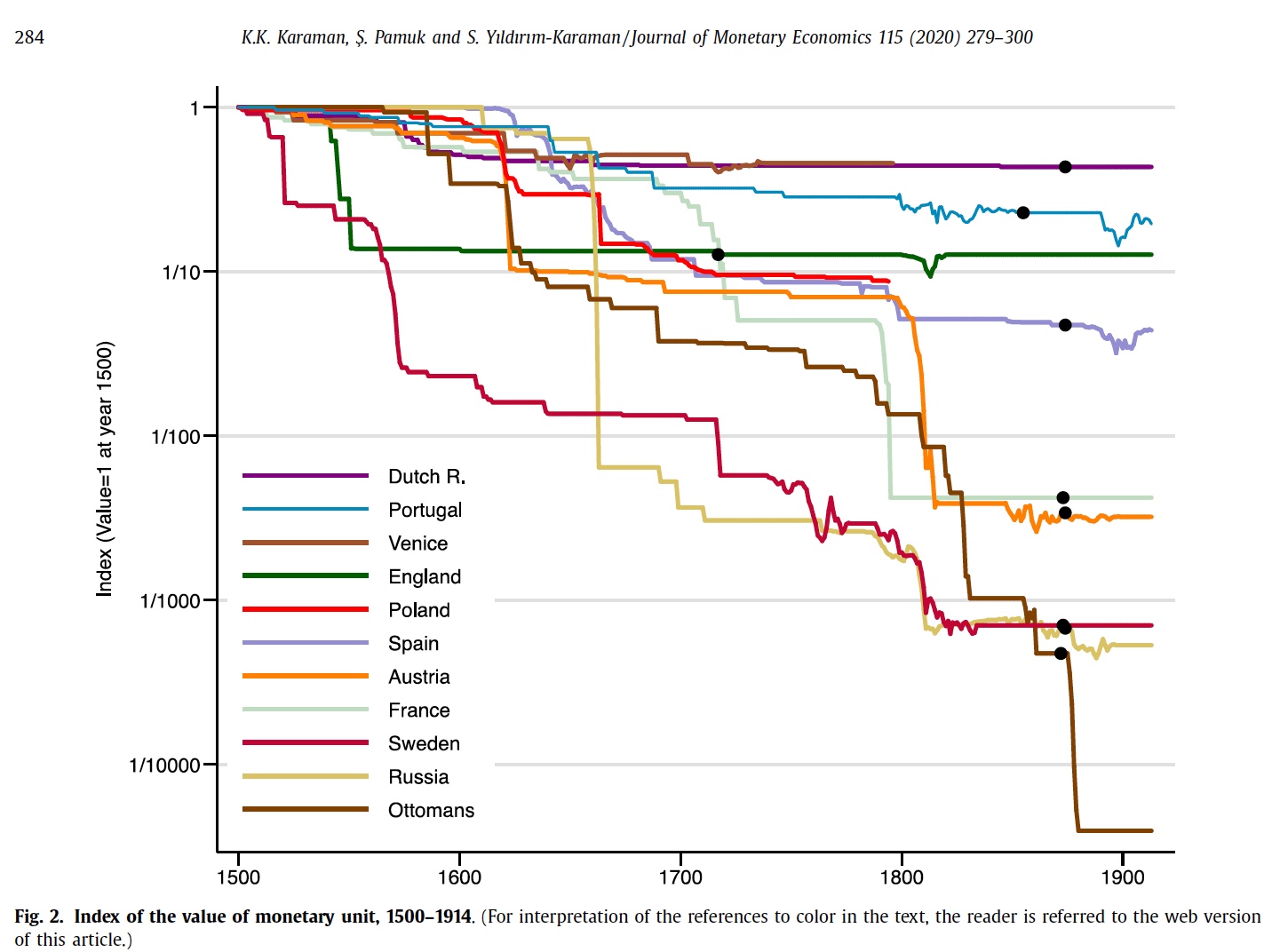K. Kıvanç Karaman, ¸Sevket Pamuk, Seçil Yıldırım-Karaman (2020), Money and monetary stability in Europe, 1300–1914, Journal of Monetary Economics (115). At one extreme, the Dutch Republic depreciated its monetary unit by about 2.3 times, at the other, the Ottomans depreciated by about 25,000 times. These two numbers correspond to average annual depreciation rates of 0.2 and 2.5% respectively, with the other states falling in-between. … depreciations tended to be episodic. In particular, long periods of constant silver and gold value alternated with episodes of rapid depreciation in consecutive years. … There were also instances of one-off depreciations, but they were few, and at low rates. … monetary stability was not an elusive objective. Some states stabilized their monetary unit
Topics:
Dirk Niepelt considers the following as important: devaluation, Gold Standard, Monetary system, Notes, Price level, silver standard
This could be interesting, too:
Dirk Niepelt writes Does the US Administration Prohibit the Use of Reserves?
Dirk Niepelt writes “Report by the Parliamentary Investigation Committee on the Conduct of the Authorities in the Context of the Emergency Takeover of Credit Suisse”
Dirk Niepelt writes “Governments are bigger than ever. They are also more useless”
Dirk Niepelt writes The New Keynesian Model and Reality
K. Kıvanç Karaman, ¸Sevket Pamuk, Seçil Yıldırım-Karaman (2020), Money and monetary stability in Europe, 1300–1914, Journal of Monetary Economics (115).
At one extreme, the Dutch Republic depreciated its monetary unit by about 2.3 times, at the other, the Ottomans depreciated by about 25,000 times. These two numbers correspond to average annual depreciation rates of 0.2 and 2.5% respectively, with the other states falling in-between. … depreciations tended to be episodic. In particular, long periods of constant silver and gold value alternated with episodes of rapid depreciation in consecutive years. … There were also instances of one-off depreciations, but they were few, and at low rates. … monetary stability was not an elusive objective. Some states stabilized their monetary unit early. England did so by the mid-16th century, except for the fiat standard episode during the Napoleonic wars. Dutch Republic stabilized its monetary unit in the early 17th century, with very minor changes in the centuries that followed. France stabilized its monetary unit in 1795 following the fiat money experiment of the Revolution. In contrast to these western European states, in southern and eastern Europe, states continued to depreciate their monetary units until the end of the period.

